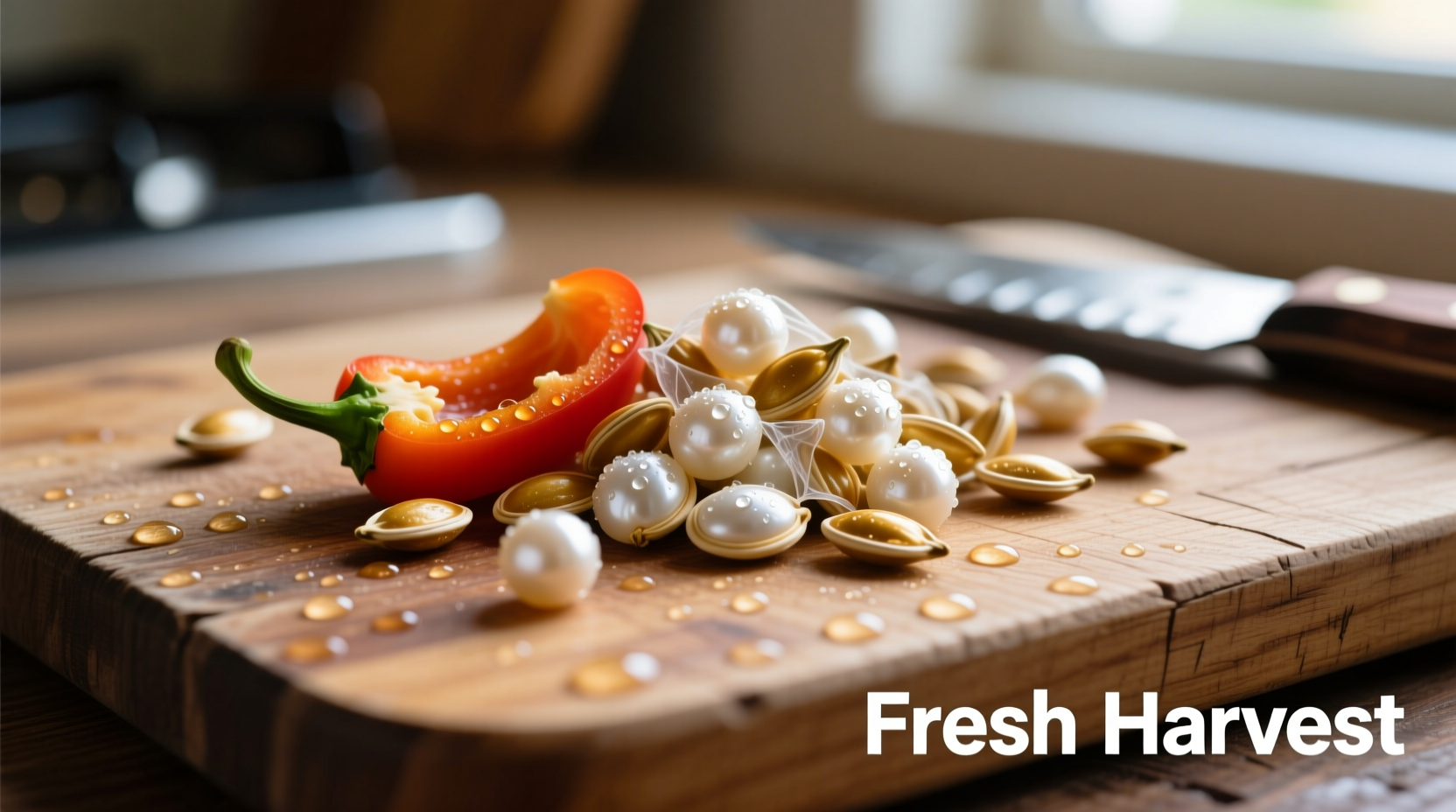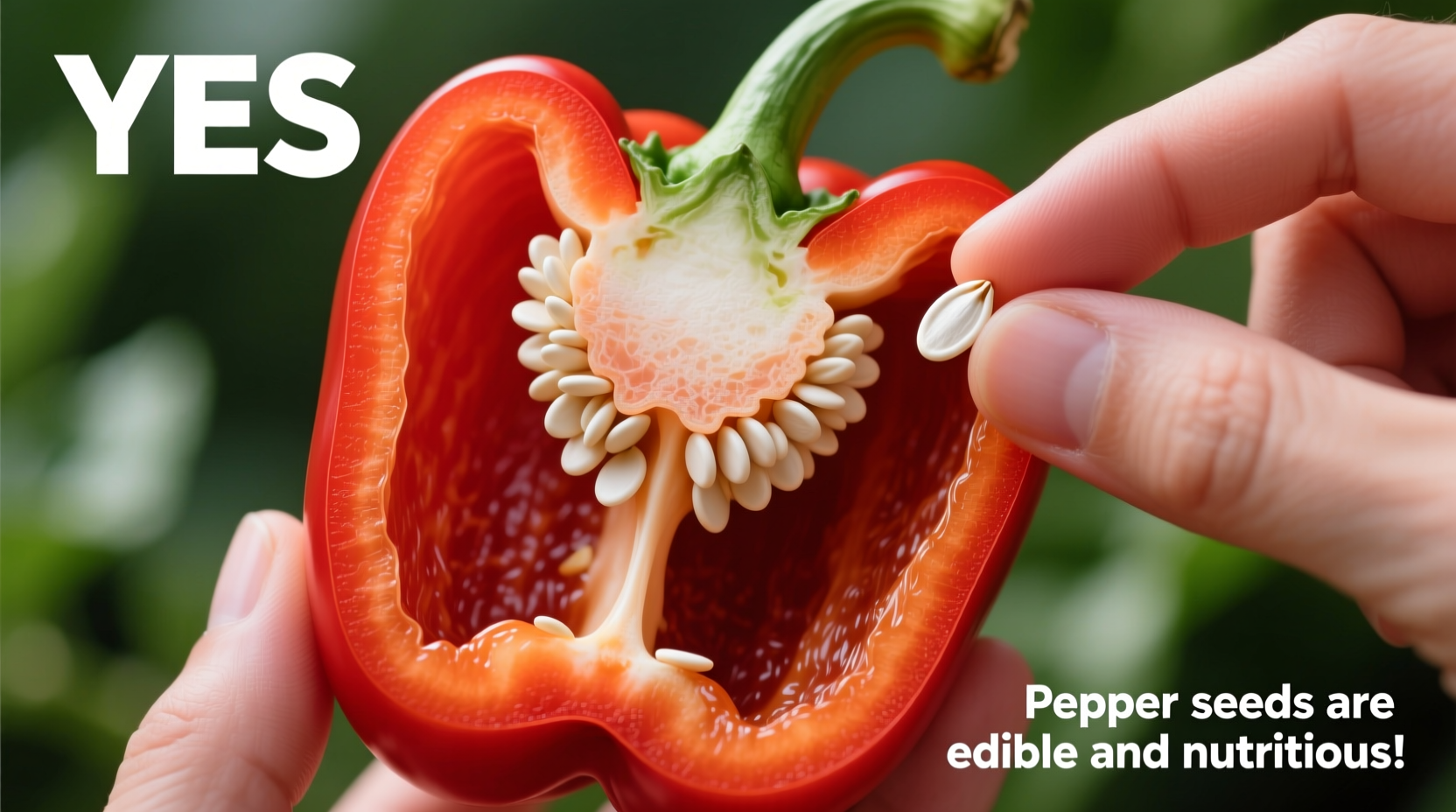Pepper seeds often get discarded without a second thought, but understanding their properties can transform your cooking experience. Whether you're preparing stuffed bell peppers or fiery habanero salsa, knowing when to keep or remove seeds makes a tangible difference in flavor, heat, and texture.
Pepper Seed Basics: What You Need to Know
Pepper seeds serve as the reproductive component of the fruit, encased within the inner membrane. While completely edible from a safety perspective, their culinary impact varies significantly across pepper varieties. The common misconception that seeds contain the most heat actually stems from confusion with the placenta—the white membrane connecting seeds to the pepper wall—which holds the highest concentration of capsaicin, the compound responsible for spiciness.
| Pepper Type | Seed Edibility | Heat Impact | Recommended Preparation |
|---|---|---|---|
| Bell Peppers | Fully edible | None | Optional removal for texture preference |
| Jalapeños | Edible with caution | Moderate increase | Remove for milder dishes |
| Habaneros | Edible but intense | Significant increase | Remove for controlled heat |
| Bell Pepper Crossbreeds | Fully edible | Minimal | Personal preference |
Why Pepper Seeds Taste Different Than the Flesh
While pepper seeds themselves contain minimal capsaicin, they absorb oils from the surrounding placenta during development. This explains why chili pepper seeds often taste significantly hotter than the fruit's flesh. According to research from the USDA Agricultural Research Service, the capsaicin concentration in seeds ranges from 0.1-2% of total capsaicin content in most varieties, with the placenta containing 70-90%.
Bell pepper seeds present a different consideration—they're completely free from capsaicin but develop a distinct bitterness as peppers mature. Food science studies at University of Minnesota Extension show that this bitterness intensifies during storage, explaining why older bell peppers often have noticeably more bitter seeds.

Practical Guidance for Home Cooks
Understanding when to keep or remove seeds transforms your cooking results. Professional chefs follow these evidence-based guidelines:
When to Keep Pepper Seeds
- Fresh bell peppers in salads—seeds add pleasant crunch without bitterness
- Roasted pepper applications—heat reduces seed bitterness significantly
- Preserving whole peppers—seeds help maintain structural integrity during canning
When to Remove Pepper Seeds
- Raw applications with mature peppers—prevents unpleasant bitterness
- Delicate sauces and purees—avoids textural inconsistency
- For heat-sensitive diners—reduces overall spiciness in chili peppers
Nutritional Profile of Pepper Seeds
Pepper seeds contain valuable nutrients often discarded unnecessarily. Analysis from the USDA FoodData Central database reveals that per 10g serving, pepper seeds provide:
- 15% of daily fiber needs
- Essential fatty acids (linoleic and oleic acids)
- Trace minerals including magnesium and zinc
- Antioxidant compounds like vitamin E
While not nutritionally significant in small quantities, retaining seeds represents a practical approach to reducing food waste while gaining marginal nutritional benefits.
Safety Considerations for Sensitive Individuals
Though generally safe, certain populations should exercise caution with pepper seeds:
- People with IBS or digestive sensitivities—the high fiber content may trigger symptoms
- Those with oral sensitivity—chili pepper seeds can cause prolonged burning sensation
- Individuals on specific medications—capsaicin may interact with blood thinners
The U.S. Food and Drug Administration confirms that pepper seeds pose no toxicity concerns for the general population, but recommends moderation for sensitive individuals.
Professional Chef Techniques for Seed Management
Mastering seed handling elevates your pepper preparation. Here's how culinary professionals approach different scenarios:
For Mild Peppers (Bell, Poblano, Cubanelle)
"I leave seeds in fresh applications when peppers are young and crisp," shares Maya Gonzalez, Latin American cuisine specialist. "The crunch adds texture to salads and stir-fries. Only when peppers show signs of maturity do I recommend seed removal to prevent bitterness."
For Hot Peppers (Jalapeño, Serrano, Habanero)
Professional chefs typically remove both seeds and membranes for controlled heat. "The seeds themselves aren't the primary heat source, but they absorb capsaicin from the placenta," explains Gonzalez. "Removing them gives you precise control over your dish's spiciness level."
Special Considerations for Preserving Peppers
When freezing or canning peppers, seeds actually help maintain structural integrity. The National Center for Home Food Preservation recommends keeping seeds intact for whole-pepper preservation methods, while removing them for purees and sauces.











 浙公网安备
33010002000092号
浙公网安备
33010002000092号 浙B2-20120091-4
浙B2-20120091-4